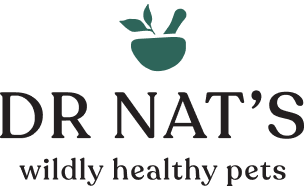This is really important information. Although I recommend a raw diet, it is not necessarily suited to every animal. It is really important to understand how to change your dog over to raw food correctly, particularly if your dog has never eaten raw food before or if they get symptoms when they have eaten raw food. For example they vomit when they eat a raw bone or they get really gassy. However if you dog gets severe symptoms such as a bloody stool from raw food then I recommend you have a holistic vet support you through this process.
Here is a step by step guide to help you change your dog over to raw food.
1. Fast with bone broth diluted 50% with water for 24 – 48hrs hours (ie give bone broth instead of other food each meal during this time – approximately 60ml of bone broth per 5 kg.)
Bone broth must not contain garlic, onion or salt for dogs and cats. It’s easy to make yourself. Just brew up some bones (preferably organic) for 24hrs or more in the slow cooker covered with water and a little vinegar. Remove the bones and discard. Let it cool in the fridge then remove the fat off the top (do NOT feed the fat to your dog or cat). Then freeze the liquid/jelly part into appropriate sizes for later use. A weekly bone broth fast is an excellent health tip for your pets. For a more detailed article about bone broth and how to make it click here.
2. Use a transition food such as Frontier which is a freeze dried food (rather than being cooked at high temps like most kibble). Use the code DRNAT10 for a discount (when you purchase $50 or more with your first purchase).
Ziwi peak is another great transition food option. This is air dried, good for transitioning and also makes great treats. There are other air dried food becoming available now such as Eureka.
Alternatively a diet cooked at low temperatures – aka not highly processed – such as Lyka is also a good option (use my discount code DRNATS20 at the check out for 20% off your first order).
These foods can be used on going if raw doesn’t suit you or your pet. It’s nice to have a shelf stable back up or something more convenient when going on holidays.
3. Add in a probiotic during this whole process. My Restore digestion tonic is perfect for supporting diet change particularly for those dogs that tend to vomit occasionally or have smelly flatulence.
4. If there are any signs that your pet may struggle or is struggling with the transition add in slippery elm; 1tsp twice daily per 10kg. Slippery elm is easily found at your local health food shop. Please note slippery elm is an endangered species so make sure you are buying from a sustainable source.
5. Dr Nat’s Nourish pet tea is also super helpful for supporting and healing the gut during any dietary change or upset. The marshmallow root in this tea has similar properties to slippery elm plus it contains 9 other gut healing herbs.
6. Continue to fast once a week for 24hrs for an adult dog with bone broth to heal the gut and help restore the immune system, skin health, anxiety and more.
7. After a week or 2 you can introduce raw food (see my raw feeding post for more details on how to feed a balanced raw diet).
8. Then after another week or 2 you can introduce raw BONES! (as long as your dog can finish the bone in less than 20mins it’s safe). Feed bones at least 2 – 3 times a week for dental health. Watch that their stools don’t become hard, white and crumbly. If they do back the bones off a little. Never feed cooked bones. For more info see my post on feeding bones safely here.
For more reading on raw diets and bones here are some great resources –
Dr Nat’s Disclaimer: This information is for educational purposes only. Please consult the advice of your veterinarian for specific questions about your pet. If your dog is prone to diarrhoea or vomiting especially from diet changes please seek the support of a holistic veterinarian before starting the diet change process. Consult’s are available with Dr Nat here.




